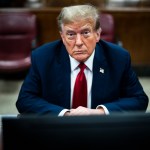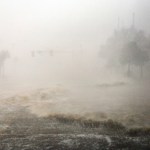For five months this year, the House intelligence committee had a crucial intelligence report on the increasing threat of terrorism in the wake of the Iraq War — yet not a single member read it. That’s including the panel’s chairman, Rep. Pete Hoekstra (R-IL) and the ranking member Rep. Jane Harman (D-CA).
In fact, an untold number of classified documents were kept from the members of the vital oversight committee from at least April to September of this year, according to the chairman’s spokesman. In an interview yesterday, he blamed the months-long delay on technical problems with the “equipment” which handles the reports. (Harman’s office did not return our phone calls and emails requesting comment.)
Hoekstra’s spokesman told the Washington Post last month that a computer problem had delayed for months the distribution of the now-infamous National Intelligence Estimate on terror and the Iraq war, which was eventually leaked to the New York Times.
“There was a bit of a snafu,” the paper quoted the chairman’s flack as saying.
I wanted more detail on this “snafu.” So yesterday I called Hoekstra’s spokesman on the committee, Jamal Ware.
The committee uses an internal, secure Web site to share classified documents, he said. “The equipment that would be used to scan [documents] into the system went down.”
“A number of documents were not scanned in,” Ware told me. He couldn’t explain the precise nature of the problem, although he assured me it was more complicated than simply “running out to get a scanner” at an office supply store. Ware also declined to tell me how long classified documents were kept from committee members.
According to Ware, since the Iraq terror NIE did not make it to the committee’s internal system, it was filed quietly away for months. With the exception of the committee’s security officer, who receives classified documents from the intelligence community to provide to the panel, no one on the committee knew that the document existed.
Press reports suggest that New York Times reporters began sniffing around about the document in August or early September. According to a statement from intel committee member Rep. John Tierney (D-MA), a Times reporter’s inquiry about the document prompted Tierney to find out if it existed. That’s when the committee’s security officer turned up the document.
A firestorm erupted after the Times revealed the existence of the Iraq terror NIE, which found that the threat of terrorism had worsened in the wake of the war. The administration quickly released a declassifed version of the Key Judgments to the public. The body of the estimate remains classified.
âThis was a very anonymous document until the people who illegally disclosed it chose to make it into something,â Ware told me.
Steve Aftergood, who directs the Federation of American Scientists’ Project on Government Secrecy, had a different take.
“Itâs an interaction with the press that catalyzed the whole process. When the press is locked out, you have to imagine that little or nothing gets done.” Calling intelligence oversight in the current Congress a “slapdash, lackadaisical affair,” he added: “You know, if the committees arenât paying attention to the estimates, then either we donât need the estimates, or we donât need the committees.”
Update: See my update for more.





 Flack: For Months, Tech “Snafu” Kept Key Intel Docs from Lawmakers
Flack: For Months, Tech “Snafu” Kept Key Intel Docs from Lawmakers


